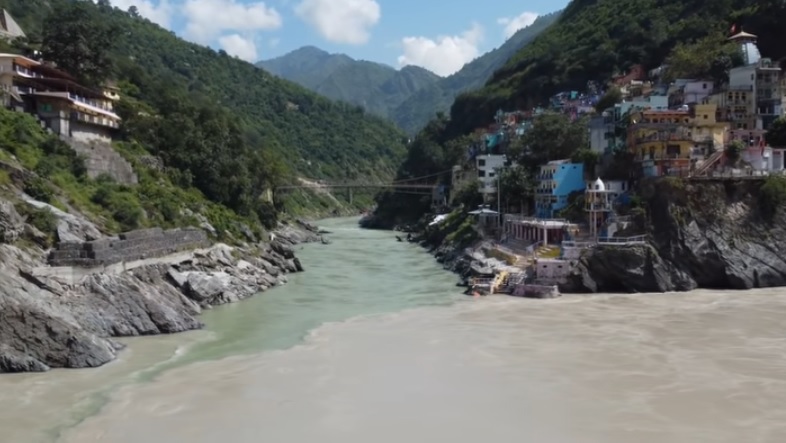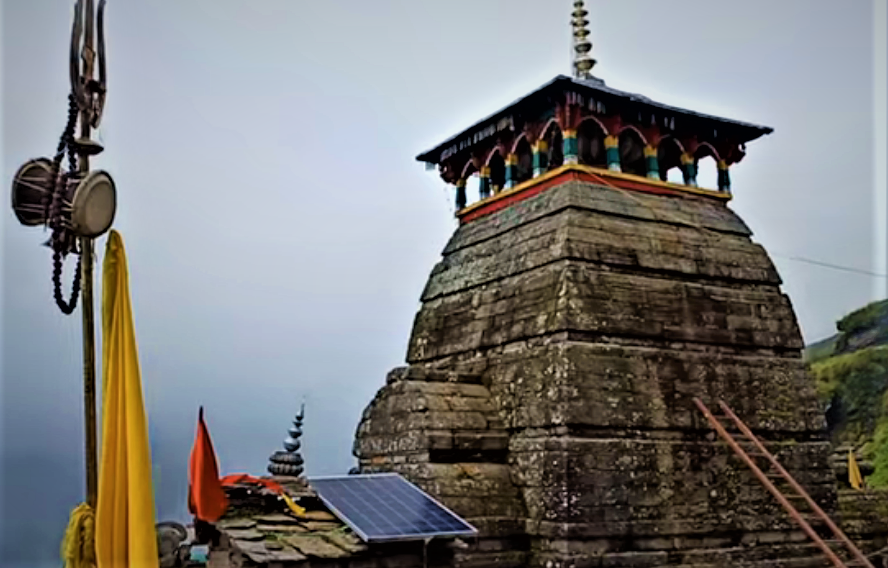Alaknanda River is a river originating from the Himalayan range. Alaknanda River is one of the two major streams of Ganga River. The second main stream is called Bhagirathi river. Rivers in India are considered sacred and revered and hence all rivers have special religious significance in Hindu religion. Alaknanda river is also no different from this. Alaknanda River is a sacred and revered river in Hindu religion.
Alaknanda River is known as the source of River Ganga. Along with Alaknanda, Bhagirathi river is also considered as the source of Ganga river. Both these water streams meet in Devprayag and from that place the name of this river is called Ganga.
Origin - Alaknanda River
The Alaknanda River originates from the confluence of the Satopanth and Bhagirath Kharak glaciers in the Himalayas. Satopanth Glacier is situated about 6 km above the source of Alaknanda. The name of this glacier is Satopanth which means the path of truth. It is believed that this name has been named after the three main deities of Hindu religion, Brahma, Vishnu and Shiva.
Further ahead from the origin point, at Mana Namak place, Alaknanda river meets its tributary Saraswati river. Mana village is located in Chamoli state of Uttarakhand and is the last village on the Indian border towards Tibet. This village is quite famous due to its scenic view and special religious affiliation due to its proximity to Badrinath Dham.
The Alaknanda River, about 3 kilometers downstream from Mana village, flows through the Badrinath pilgrimage site. After this the river reaches Hanumanchatti and further joins Bhagirathi River at Devprayag and moves forward as River Ganga.
Know about Raja Ji National Park !
Tributaries - Alaknanda River
The Alaknanda River has many tributaries on the left and right banks, which contribute to its flow. The tributaries of Alaknanda River are Saraswati, Dhauliganga, Nandakini, Mandakini and Pindar.
Saraswati river meets Alaknanda river at Mana on the right side.
Dhauliganga River is a left side tributary which joins Alaknanda River at Vishnuprayag.
The Alaknanda River, between Vishnuprayag and Nandprayag, contains the confluence of Balkhilya River, Virahi Ganga, Patal Ganga and Garun Ganga rivers.
Nandakini River is a left side tributary which joins Alaknanda River at Nandprayag.
Pindar River is a left side tributary which joins Alaknanda River at Karnaprayag.
Mandakini River is a right tributary which joins Alaknanda River at Rudraprayag.
Mythological Stories - Alaknanda River

Alaknanda River holds special religious significance in Hinduism. Alaknanda River is considered to be one of the streams originating from the locks of hair of Lord Shiva. According to mythology, King Bhagiratha had succeeded in bringing the river Ganga from heaven to earth after many years of rigorous penance. In order to slow down the powerful flow of Ganga before it descends to the earth, he prayed to Lord Shiva to take care of the rapid flow of Ganga. According to the story, Lord Shiva tied the river Ganga in his locks and reduced its flow.
The matted hair itself is called Alak. It was called Alaknanda because it flowed from the lips of Lord Shiva. Alaknanda River is one of the ancient rivers of India, whose description can be seen in ancient texts. Great poet Kalidas has also mentioned this river in his writings. Alaknanda River is also called Vishnu Ganga.
Specific - Alaknanda River
The color of the Alaknanda River changes from place to place depending on the season and the presence of sand, mud and rocks in the water. The water of Alaknanda river is greenish blue in colour. It can also be called turquoise or turquoise color. During monsoon, a large amount of soil etc. from the mountains gets mixed in the water and during that time the water of Alaknanda river also becomes muddy.
This river is mainly located in the Garhwal region of Uttarakhand and its length is about 190 kilometers. The width of the river varies from place to place according to geographical location.
Temples - Banks of Alaknanda River
Many Hindu temples are situated on the banks of Alaknanda river. Some of these major Hindu temples are
Dhari Devi Temple
This temple is located on the banks of the Alaknanda River between Srinagar and Rudraprayag in the Garhwal region. This temple is dedicated to Dhari Devi. Dhari Devi is considered to be a form of Goddess Kali. Dhari Devi is worshiped as a protective goddess in Uttarakhand.
Badrinath Dham
This temple is situated in the city of Badrinath situated on the Alaknanda River which is a main Dham. This temple is dedicated to Lord Vishnu and is one of the four Char Dham pilgrimage sites in India.
Kedarnath Dham
This temple located in Kedarnath city is also known as Kedarnath Dham. This temple is situated on the banks of Mandakini River, a tributary of Alaknanda River. Kedarnath Temple is dedicated to Lord Shiva and is one of the four Char Dham pilgrimage sites in India.
Tungnath Temple Chopta

This temple is situated in Chopta city which is situated on the banks of Alaknanda River. Tungnath Temple is dedicated to Lord Shiva and is the highest among all the temples dedicated to Lord Shiva. This temple is one of the Panch Kedar pilgrimage sites.
At Present - Alaknanda River
Uttarakhand is known as a suitable place in India for adventure sports and the number of tourists coming here for adventure sports is increasing every year. River rafting is one such adventure sport and rafting activity is very famous in the Alaknanda River.
Many hydro-projects may come up in the future in the Alaknanda river basin.



.jpg)
